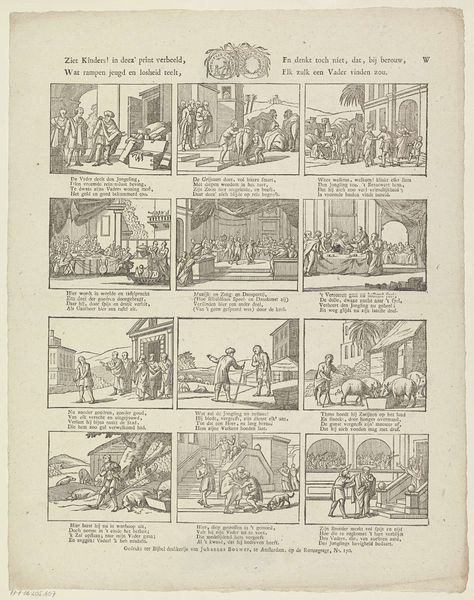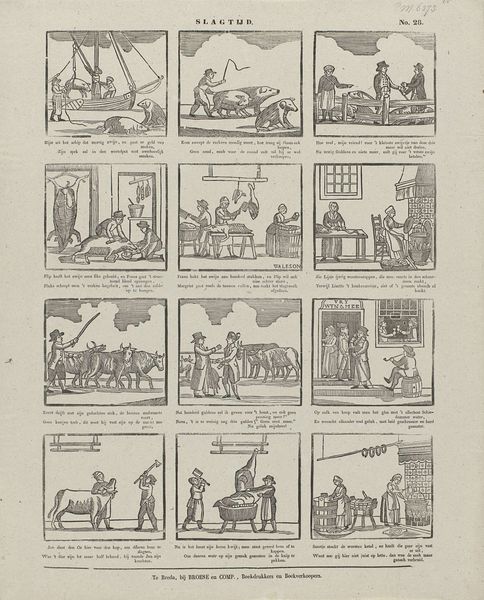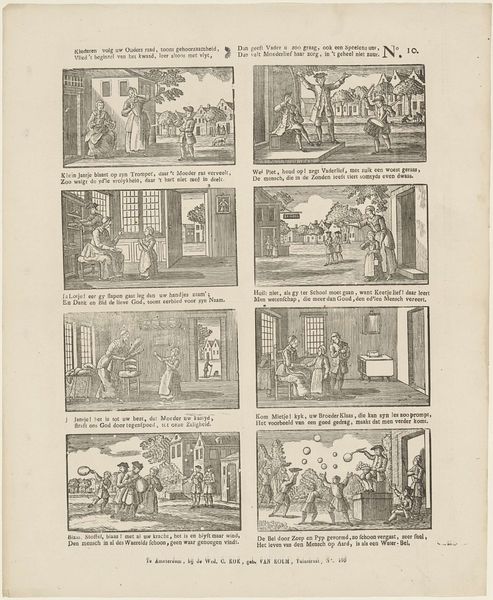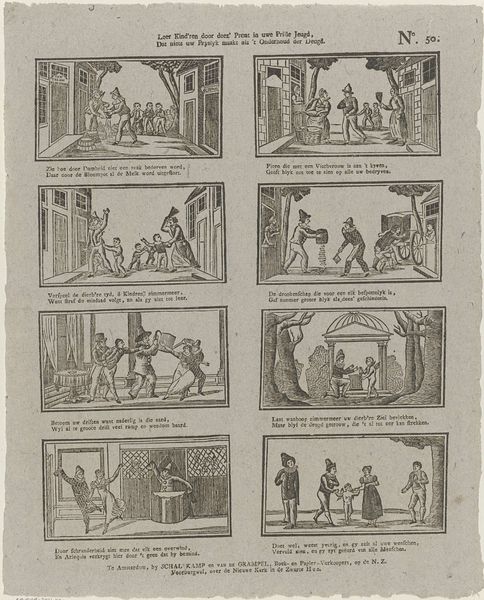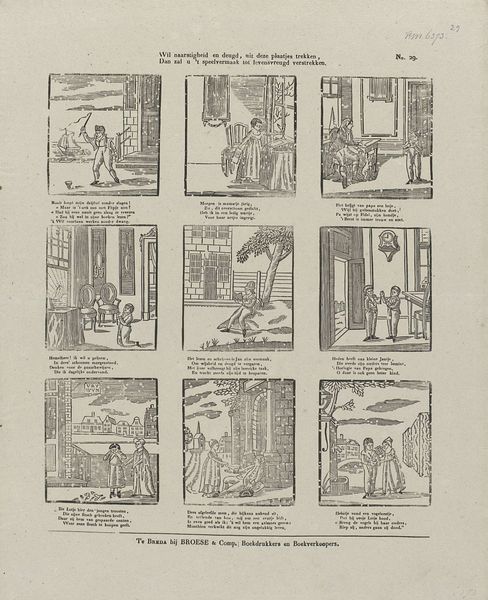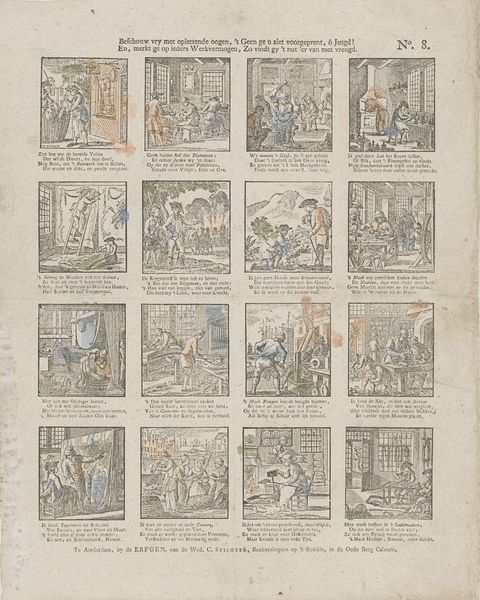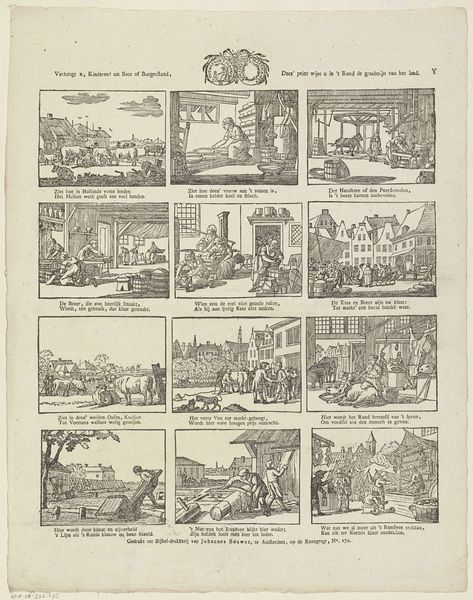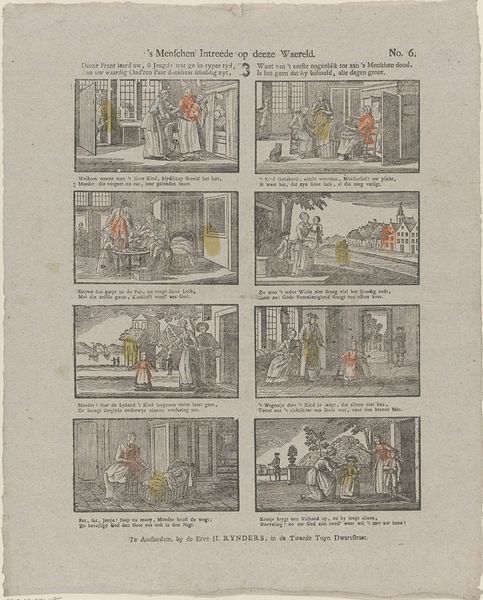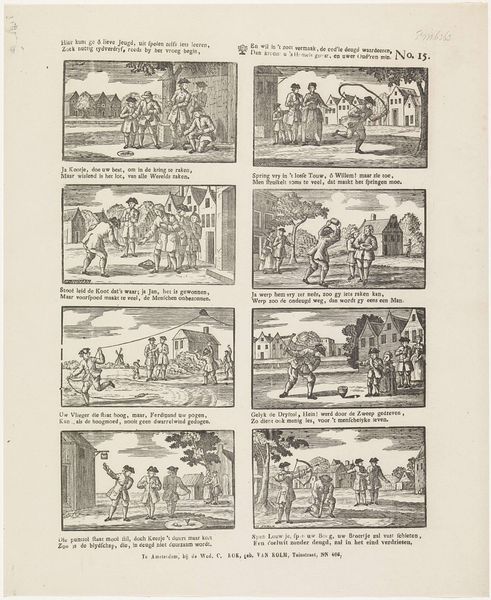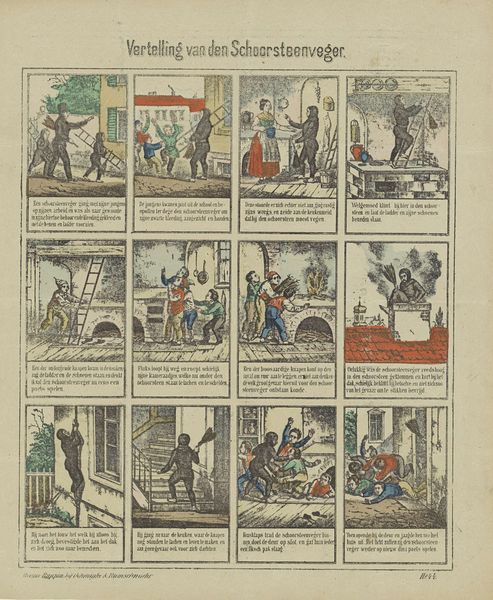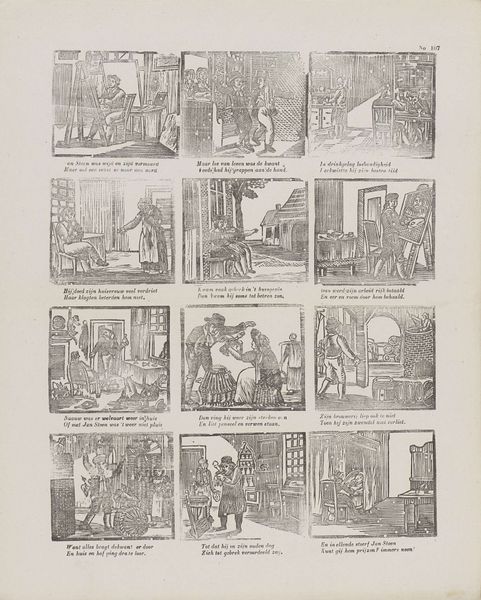
Dat gij, ô jeugd! in deze print, / Alhier u zelve spelend vindt! 1811 - 1829
0:00
0:00
print, paper, engraving
#
narrative-art
#
dutch-golden-age
# print
#
figuration
#
paper
#
comic
#
line
#
genre-painting
#
history-painting
#
engraving
Dimensions: height 393 mm, width 316 mm
Copyright: Rijks Museum: Open Domain
Curator: I am immediately struck by how quaint this print feels, like peeking into a miniature, long-lost world of children’s games. It reminds me a little of those miniature books. Editor: Indeed. What we have here is an engraving titled “Dat gij, ô jeugd! in deze print, Alhier u zelve spelend vindt!” or roughly translated, "That you, o youth! in this print, will find yourself playing here!” Created sometime between 1811 and 1829 by Gerrit Oortman, it's currently housed in the Rijksmuseum. Curator: Oortman gives us this grid of twelve vignettes, almost like a comic strip. Except instead of superheroes, we see kids engaging in what look like timeless activities – riding hobby horses, playing tag, and blind man's bluff, building something... is that a siege? Each scene overflowing with a very lively and distinct energy. Editor: And notice how he meticulously renders these scenes. The children’s postures, the buildings’ details, the subtle gradations of light and shadow... Even though this is a relatively small print, the artist creates a real sense of depth and volume in each panel. One almost smells the streets...or at least that faint aroma of aged paper. Curator: Those buildings hint at the world beyond their play. We feel the shadow of parental expectations, economic realities even as they're busy shaping childhood fantasies, as preparation to their adulthood selves. Editor: Exactly! Oortman's use of such universally recognized games invites us to see the connections that transcends historical changes. Human needs don’t really alter; we carry forth from generation to generation the same urges to find meaning, express creativity and be present in play. Curator: Looking at it all, one sees nostalgia, not only for our own fleeting past, but more profoundly as something we feel on a collective and cultural scale for the shared aspects of youth. Editor: I concur. It feels especially poignant that these children from the 19th century could be our own: the timelessness reminds one about play being always in conversation with the soul’s natural expression, no matter the century!
Comments
No comments
Be the first to comment and join the conversation on the ultimate creative platform.
